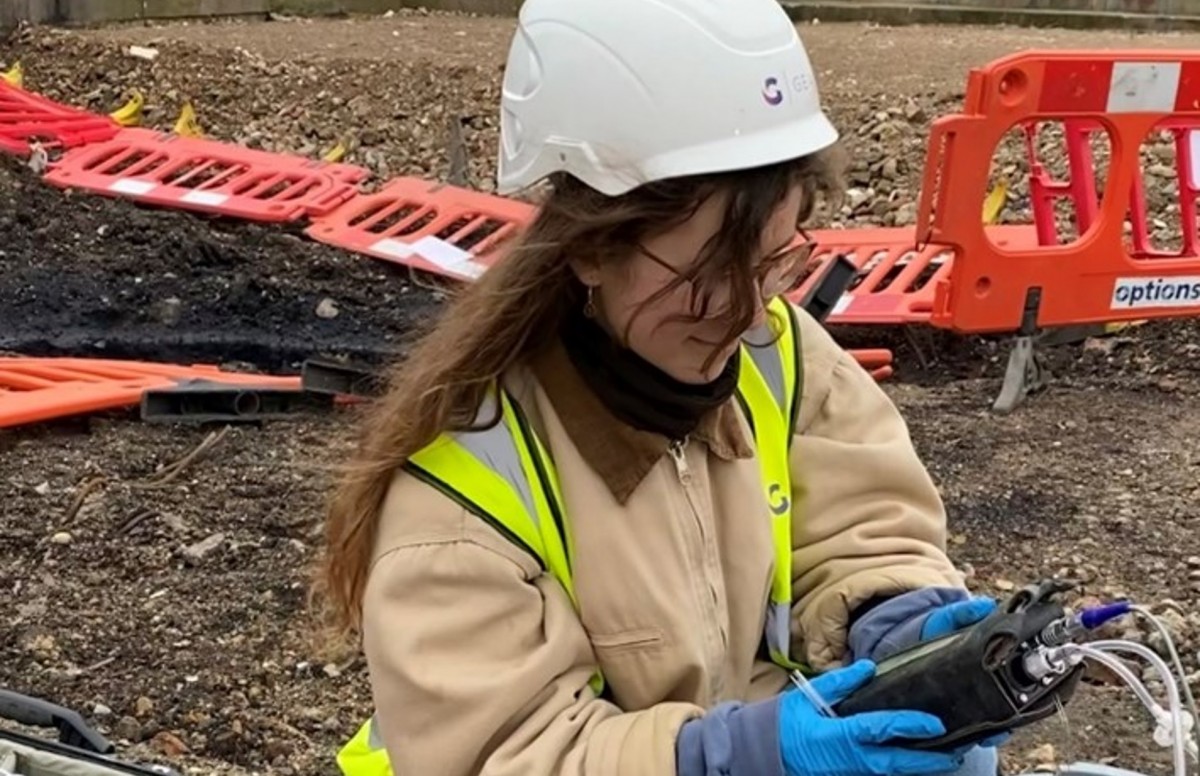The Best Guide To Geotheta

A geotechnical designer is a specialized civil designer who focuses on the habits of soil, rock, and other products discovered under the Planet's surface. They use clinical concepts and design methods to evaluate the residential or commercial properties and habits of these materials to sustain the risk-free and effective layout, building, and maintenance of facilities projects.
They conduct website investigations, collect examples, do laboratory examinations, and examine data to evaluate the suitability of the ground for building and construction jobs - Consulting Engineer. Based upon their findings, geotechnical engineers provide suggestions for foundation layout, slope security, retaining frameworks, and reduction of geotechnical threats. They work together with other specialists, such as engineers, architectural engineers, and construction groups, to make sure that geotechnical factors to consider are integrated into the total job style and application
By assessing the habits and residential properties of dirt and rock, they can identify potential geotechnical threats such as landslides, dirt negotiation, or incline instability. Their knowledge helps stop failings or accidents that might threaten lives and residential or commercial property. Below are some in-depth tasks and responsibilities of a geotechnical designer: Website Investigation: Geotechnical engineers conduct website examinations to gather information on subsurface conditions.
They interpret the information to understand the buildings and behavior of the dirt and rock, including their stamina, leaks in the structure, compaction qualities, and groundwater problems. Geotechnical Evaluation and Design: Geotechnical designers analyze the information gathered during website investigations to examine the stability and suitability of the site for construction jobs. They carry out geotechnical computations and modeling to assess variables such as birthing capacity, settlement, slope security, side planet stress, and groundwater flow.
Not known Details About Geotheta
Foundation Layout: Geotechnical engineers play a critical function in developing structures that can securely support the desired structure. They evaluate the soil conditions and load needs to establish the appropriate structure type, such as superficial foundations (e.g., footings), deep foundations (e.g (https://www.twitch.tv/geotheta/about)., piles), or specialized techniques like dirt renovation. They consider elements such as negotiation restrictions, birthing capacity, and soil-structure interaction to create optimum structure styles
They examine building and construction strategies, monitor website activities, and perform field examinations to confirm that the style recommendations are followed. If unforeseen geotechnical problems occur, they assess the situation and offer recommendations for removal or changes to the design. Risk Analysis and Mitigation: Geotechnical engineers analyze geotechnical dangers and risks connected with the job site, such as landslides, liquefaction, or dirt erosion.

Cooperation and Communication: Geotechnical designers work carefully with other specialists associated with a job, such as engineers, structural designers, and building teams. Effective interaction and partnership are important to integrate geotechnical considerations right into the general project style and building and construction process. Geotechnical designers offer technological proficiency, response queries, and make sure that geotechnical requirements are satisfied.
Geotheta Can Be Fun For Everyone
Below are some kinds of geotechnical engineers: Foundation Designer: Structure engineers concentrate on designing and evaluating structures for structures. They assess the dirt conditions, lots needs, and site characteristics find out here to figure out one of the most appropriate foundation kind and layout, such as superficial structures, deep foundations, or specialized techniques like pile foundations.
They assess the factors influencing slope stability, such as soil homes, groundwater problems, and slope geometry, and develop approaches to avoid slope failures and minimize threats. Quake Engineer: Quake designers specialize in evaluating and developing structures to withstand seismic pressures. They analyze the seismic threat of a website, examine dirt liquefaction potential, and develop seismic layout criteria to ensure the safety and strength of frameworks during quakes.
They carry out field screening, accumulate examples, and evaluate the collected information to identify the dirt residential properties, geologic developments, and groundwater problems at a site. Geotechnical Instrumentation Engineer: Geotechnical instrumentation engineers concentrate on surveillance and gauging the actions of soil, rock, and frameworks. They set up and maintain instrumentation systems that keep track of factors such as dirt negotiation, groundwater degrees, slope movements, and architectural displacements to analyze performance and offer early cautions of potential concerns.
Some Known Facts About Geotheta.
They tend to be investigative people, which suggests they're intellectual, introspective, and analytical. They wonder, systematic, rational, logical, and logical. A few of them are additionally social, implying they're kind, generous, participating, individual, caring, useful, compassionate, skillful, and friendly. Does this noise like you? Take our free profession test to figure out if geotechnical designer is just one of your leading job suits.
In the office atmosphere, geotechnical engineers use specialized software devices to do computations, produce styles, and examine data. They prepare reports, review project requirements, communicate with clients and group members, and coordinate project tasks. The office setup gives a favorable environment for study, analysis, and cooperation with various other professionals associated with the job.
The Buzz on Geotheta
They often visit job sites to carry out website examinations, examine geotechnical conditions, and collect data for evaluation. These brows through include taking a trip to different areas, in some cases in remote or tough terrains. Geotechnical designers may do soil sampling, conduct tests, and display building activities to make certain that the geotechnical aspects of the task are being implemented properly.
Geotechnical engineers likewise function in specialized geotechnical labs. Geotechnical research laboratory engineers work extensively in these atmospheres, taking care of screening tools, running tools, and videotaping information.
Comments on “3 Simple Techniques For Geotheta”